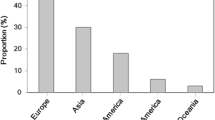Abstract
Electrical and electronic waste (e-waste) has become one of the fastest growing waste streams in the world, and many countries have established e-waste treatment enterprises to solve their e-waste problems. In this study, a life cycle assessment (LCA) was undertaken to quantitatively investigate the environmental impacts of an e-waste treatment enterprise in China. The LCA is constructed by SimaPro software version 7.2 and expressed with the Eco-indicator 99 life cycle impact assessment method. For a sensitivity analysis of the overall LCA results, the so-called CML method is used in order to estimate the influence of the choice of the assessment method on the result. According to the survey data, discarded TV sets accounted for the highest proportion of e-waste treated in the enterprise in 2010. The e-waste treatment had little environmental impact, and at the same time large environmental benefits can be achieved mainly due to the recycled resources and reuse of some components. Based on the research results, it can be seen that recycled metal, especially copper, would be of more importance for environmental benefits. Relevant results and data from this study could provide decision support to enterprise managers and government sectors.



Similar content being viewed by others
References
Widmer R, Krapf HO, Khetriwal DS et al (2005) Global perspectives on e-waste. Environ Impact Assess Rev 25(5):436–458
Peralta GL, Fontanas PM (2006) E-waste issues and measures in the Philippines. J Mater Cycles Waste Manage 8:34–39
Waste electrical and electronic equipment (WEEE) (2005): innovating novel recovery and recycling technologies in Japan. Report of a DTI Global Watch Mission September
Liu X, Yang J, Wang R (2005) Estimation of WEEE generation in China. China Popul Resour Environ 15(5):113–117 (In Chinese)
Lin F, Wang J (2003) Study on prediction of amount of obsolete computers in China and countermeasures. Shanghai Environ Sci 22(7):479–482 (In Chinese)
Mao J (2004) “How difficult WEEE recycling is in China?” China Economic Times (In Chinese)
MEFCPCB (Ministry of Environment and Forests Central Pollution Control Board) (2008) Guidelines for Environmentally Sound Management of E-waste
Leung A, Cai ZW, Wong MH (2006) Environmental contamination from electronic waste recycling at Guiyu, Southeast China. J Mater Cycles Waste Manage 8:21–33
Robinson BH (2009) E-waste: an assessment of global production and environmental impacts. Sci Total Environ 408:183–191
Song Q, Wang Z, Li J, Duan H (2011) Effect analysis of the TOHANO policy on WEEE Recycling in China. The Sixth International Conference on Waste Management and Technology, Suzhou, China
Song Q, Wang Z, Li J, Duan H (2012) Sustainability evaluation of an e-waste treatment enterprise based on energy analysis in China. Ecol Eng 42:223–231
Song Q, Wang Z, Li J, Zeng X (2012) Life cycle assessment of TV sets in China: A case study of the impacts of CRT monitors. Waste Manage. http://dx.doi.org/10.1016/j.wasman.2012.05.007
ISO (International Standard Organization) (2012) 14040 series: environmental management—life cycle assessment—principles and framework. ISO 14040 series. http://www.iso.org/iso/iso_catalogue/catalogue_tc/catalogue_detail.htm?csnumber=37456. Accessed 29 Feb 2012
Rebitzer G, Ekvall T, Frischknecht R, Hunkeler D, Norris G, Rydberg T et al (2004) Life cycle assessment Part 1: framework, goal and scope definition, inventory analysis, and applications. Environ Int 30(5):701–720
Pennington DW, Potting J, Finnveden G, Lindeijer E, Jolliet O, Rydberg T et al (2004) Life cycle assessment Part 2: current impact assessment practice. Environ Int 30(5):721–739
Guinee J, Gorrée M, Heijungs R, Huppes G, Kleijn R, de Koning A et al (2001) Life cycle assessment—an operational guide to the ISO standards. Leiden University, Centre of Environmental Sciences (CML), Leiden
Josa A, Aguado A, Cardim A, Byars E (2008) Comparative analysis of the life cycle impact assessment of available cement inventories in the EU. Cem Concr Res 37(5):781–788
Vlasopoulos N, Memon FA, Butler D, Murphy R (2006) Life cycle assessment of wastewater treatment technologies treating petroleum process waters. Sci Total Environ 367(1):58–70
Acknowledgments
The work is financially supported by the Environmental Protection Public Welfare Project (grant number 201109035), and University of Macau.
Author information
Authors and Affiliations
Corresponding author
Rights and permissions
About this article
Cite this article
Song, Q., Wang, Z., Li, J. et al. The life cycle assessment of an e-waste treatment enterprise in China. J Mater Cycles Waste Manag 15, 469–475 (2013). https://doi.org/10.1007/s10163-013-0152-7
Received:
Accepted:
Published:
Issue Date:
DOI: https://doi.org/10.1007/s10163-013-0152-7




